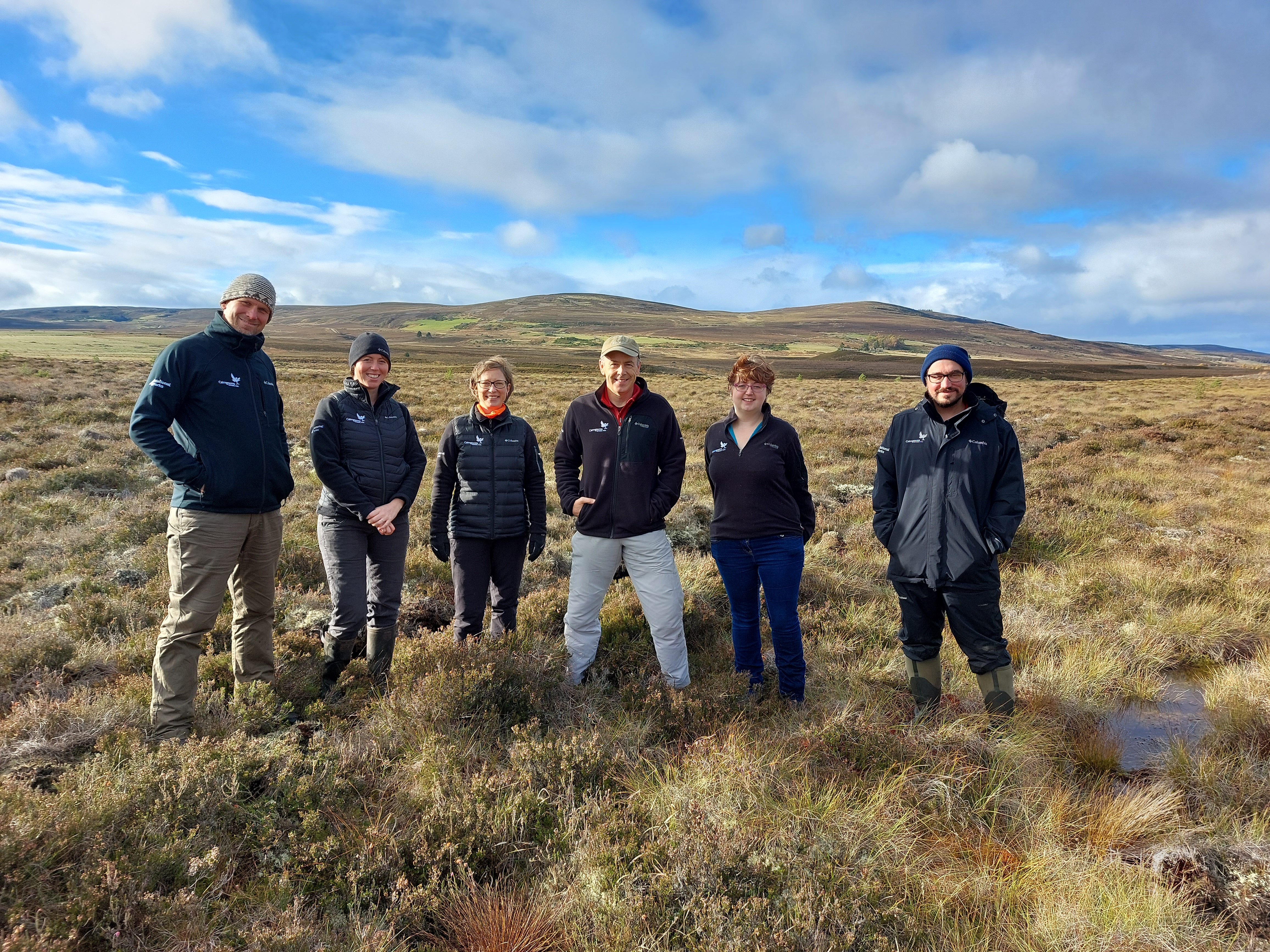Meet the Park’s Peatlands ACTION team!

Meet the Park’s Peatlands ACTION team!
With all eyes on Scotland for what is considered to be the most important climate conference ever staged – we thought it would be a good opportunity to introduce our new look Peatland ACTION team, here at the Cairngorms National Park Authority.
Peatlands are huge carbon stores but with most of Scotland’s peatlands currently degraded they emit millions of tonnes of harmful CO2 each year. As such, the Scottish Government has been funding peatland restoration projects since 2012, initially through NatureScot.
However, the CNPA officially became a full Peatland ACTION delivery partner in April of this year – managing a three year programme with a £9.92million budget – with the aim of delivering over 2,750 hectares of restored peatlands in the National Park. That’s the equivalent of around 10 Holyrood Parks.
At the helm of the CNPA Peatland ACTION team is Stephen Corcoran, Programme Manager. He explained: “The development of our own Peatland programme here in the National Park is a significant venture for us, requiring a new-look team to deliver on a big scale. We are working across the National Park on increasing delivery and have many, potential projects due to the enthusiastic support from the land management community. Our bigger team can provide a full project management service from the initial project design and surveys through to assisting with grant applications, and contractor management helping to meet this demand. The team’s work will see significant carbon savings and help to protect the carbon stored in our amazing peatlands.”
Daisy Whytock, one of four Peatland ACTION Project Officers at the CNPA said: “We are working in the highest restoration sites in the UK so inclement weather is obviously a big challenge. At these altitudes the process of re-vegetating bare peat takes longer due to the short growing season, maybe only 4-5 weeks compared with 15-20 weeks on lowland sites.
“Where we have larger areas of damaged, bare peat, one technique we use is whole turfing where turfs are lain over the bare peat. This is slow work requiring low ground pressure machines and experienced machine operators. On sites with just drains, we again use machines to completely fill in the drain and install peat dams to spread water across the bog.
“Peatland restoration requires experienced plant operators, with the right machinery, and this remains the biggest challenge in up scaling restoration in the National Park and across Scotland”.
“To help address this challenge the CNPA has set up a new entrant scheme to support local plant operators who are interested in coming on board with dedicated ‘on the job’ training,” said Daisy. “We hope that this goes some way to meeting that challenge head on, so that we can achieve our targets in the timescale given, and play our part in tackling climate change.”
Peatlands are internationally important; they are home to a host of specialist wildlife and absorb and store masses of carbon from the atmosphere. They cover nearly a quarter of Scotland and contain over half the total Scottish soil carbon. In the Cairngorms National Park, over one fifth of the land is peatland habitat and 80% is considered to be in poor condition. Damaged peatlands can lead to poor water quality, increased risk of flooding, reduced biodiversity and well as the carbon emissions that are so damaging to the environment.
Chief Executive of the CNPA, Grant Moir commented: “We see nature-based solutions as being critical to combating the climate emergency. With a target of net zero by 2045, Scotland has one of the most ambitious approaches to climate change in the world and the Cairngorms National Park is ideally placed to showcase how the transition to a net zero economy and society can take place. With COP26 happening on our doorstep this week it is great to see our Peatland ACTION colleagues rising to the challenge.”
Alert
Latest from the National Park
Update on wildfire situation
Convener Sandy Bremner and Chief Executive Grant Moir have given an update on the ongoing wildfire situation.
Statement on wildfires
An update from Grant Moir, Chief Executive of the Cairngorms National Park Authority, on the ongoing wildfires in Moray and Highland.
New Nethy houses get green light
Meeting in Ballater, the Planning Committee approved applications for a development of 35 houses in Nethy Bridge and a floodplain restoration scheme on the River Dee.
Relevant alerts
-
As a result of ongoing efforts to tackle wildfires to the north of the Cairngorms National Park, several roads are currently closed. Scottish Fire and Rescue are in attendance and the public are advised to avoid the area, including footpaths. Road users are asked not to ignore road closed signs.
The affected roads are:
- B9007 Ferness to Duthil
- U2379 Lochindorb Road
- B939 Ferness to Grantown-on-Spey
- U2347 Braes of Castle Grant
For all the latest information check out the Scottish Fire and Rescue Service and Police Scotland website and social media.




